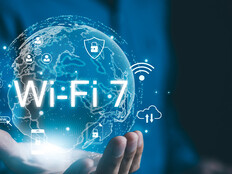The Retail Technology That Millennials Want
Millennials are getting a lot of attention from retailers today, and deservedly so. Customers born between 1982 and 2000 now outnumber baby boomers and represent a key demographic for retail sales and marketing programs. They also represent the future: Their buying power will have an impact for six decades or more.
What does it take to create successful customer engagements for this group?
“Many millennials want experiences and products that are tailored to their individual needs, and they want a say in shaping brands,” says Jose Avalos, global director of visual retail at Intel. “The best way to do that is to create new communications vehicles with these consumers, and at the same time collect data and perform analytics to improve business operations and sales strategies.”
Fortunately, a host of technologies can help retailers closely engage with millennials, as well as younger and older customers. Industry analysts say several key technologies may help define the future of retailing this year and for the rest of the decade.
Beaconing Prices Come Down to Earth
Retail beacons, location-based mobile communication devices, are becoming important customer-engagement tools. About the size of a disposable lighter, a beacon can send messages via Bluetooth or other close-range networking technologies to the smartphones and tablets of digitally savvy consumers.
The most effective implementations are those that pair with apps shoppers have downloaded to their devices. This enables beacons to send tailored messages based on the buying personas of customers. The goal is for these communications to draw in shoppers who otherwise would have passed by a store and direct them to specific departments, products and promotions.
Economic realities are positioning beacons for wider deployment this year. “Beacon prices have come down tremendously,” says Perry Kramer, vice president and practice lead at Boston Retail Partners, a research firm.
Industry veterans expect “way-finding” to be the biggest driver of new beacon deployments this year. For example, when a customer receives a discount coupon for a flat-screen TV, a beacon can provide turn-by-turn directions to where a specific model is displayed in a cavernous big-box store.
NFM, which sells furniture and electronics to customers throughout the Midwest, is using a beaconing solution from Aruba Networks that takes wayfinding to a new level, says Alan Ni, Aruba’s head of vertical marketing.
“Store executives tied the way points to systems for inventory management and digital price tags,” he explains. “So if a TV is moved to an endcap during a promotion, customers can quickly find the product and see accurate pricing information.”
He adds that Aruba’s beacons also support smaller retail shops as well as concession stands in airports and stadiums.
To successfully adopt beacons, retailers should look for solutions that bundle the devices with centralized management software that shows the status of each unit, including whether the coin-sized battery in a particular device is due for replacement, says Ni.
Retailers may start out with a small-scale deployment that simply presents the same coupon to everyone who enters a store. “This keeps the cost of entry low to get a proof of concept up and running,” Kramer says. “Over time, stores can then add capabilities to make the messaging more targeted for a persona-based experience.”
A Long-Range View of the Internet of Things
Despite the hype that the Internet of Things (IoT) has received across all commercial sectors, most retailers are taking a wait-and-see approach to the technology in 2016. “Much of the attention will be devoted to determining what IoT will actually mean for retail,” Kramer says.
Fueling interest in IoT as well as machine-to-machine communications are continuing advances in computing technology, which make high levels of processing power available once applications become more defined.
“Compute has delivered approximately a 60-time performance increase over the last 10 years, while prices have stayed about the same on a relative basis,” Avalos says.
Many retailers have been intrigued by network-addressable refrigerators that have arrived in recent months. They tie consumption activities registered by sensors in the appliances to grocery store shopping lists. But as amazing as smart refrigerators seem, a more important near-term IoT project may be in optimizing retail supply chains, Kramer adds.
For 2016, analysts expect most retailers to be watching IoT as a long-term trend rather than a mainstream technology. Nevertheless, retailers should start planning for IoT this year so they can act quickly when a business need arises.
Networks Grow to Support Digital Retail Needs
Wi-Fi has already become a foundation for tablet-toting sales associates and mobile point-of-sale terminals. Now, store managers are expanding their networks with free, guest Wi-Fi capabilities.
“Even when they’re in a store, shoppers are still online researching products,” Ni points out. “Retailers are now recognizing that instead of letting customers use cellular networks, guest Wi-Fi offers branding opportunities and the chance for stores to see where customers are going online and what their interests are.”
Ni advises network administrators to work closely with managers in charge of digital commerce and omnichannel operations.
“This will give IT people a much better idea of what business people need and make them aware that networks provide a context that may be monetized,” he says.
Ni also recommends IT officials look at Wi-Fi within a broader networking context.
“Now that there’s more and more digital technology going into stores, retailers should look to managing wired and wireless networks as a single, unified fabric,” he says.
For example, Aruba’s Cloud Services Controller combines cloud management with a single appliance for integrated firewall, routing, switching and WAN acceleration capabilities.
Evaluate, Then Act
Staying abreast of important technology developments will be important in the year ahead, but retailers must also act.
“If you’re not trying something new in some area of your operations, you’re moving backward,” Kramer says. “Everything is changing so rapidly, you can’t afford to stand still for long or you’ll never be able to catch up.”









